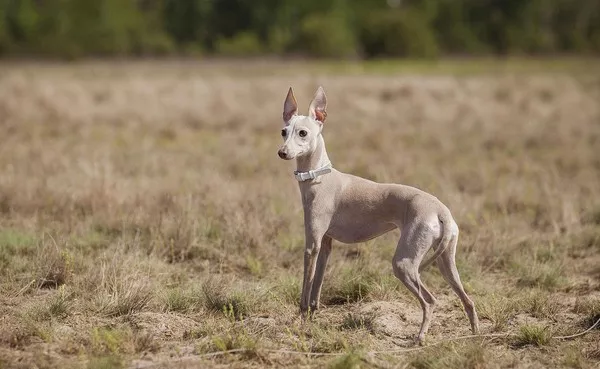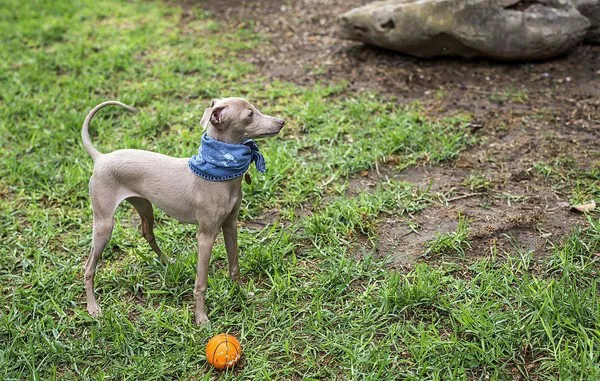Foxhounds are a special type of dog known for their hunting skills, loyal nature, and athletic build. They have an interesting history and a set of characteristics that make them unique among other dog breeds. This article will provide an in-depth look into what it means to own a Foxhound, including their history, physical traits, behavior, training needs, and how they adapt to different living situations.
The History of the Foxhound
The Foxhound’s origins can be traced back to England during the early 17th century. These dogs were originally bred for hunting foxes, which is where they get their name. Their role was to track and chase foxes during hunts, making them essential members of hunting packs. They were developed by crossing different breeds, including the English Foxhound, the American Foxhound, and the French Harrier.
These dogs were bred for endurance, speed, and keen scenting ability, which are all crucial for hunting. Foxhounds were used in packs, where each dog would work together to locate and chase down a fox. Over time, the breed spread to different parts of the world, including the United States, where the American Foxhound variety became popular.
Physical Traits of the Foxhound
Foxhounds are medium to large-sized dogs, with males typically weighing between 65 and 75 pounds and females ranging from 55 to 65 pounds. They have long, strong legs and a muscular build, designed for stamina and speed. Their bodies are lean, with a well-defined chest and ribcage, which allows for efficient movement over long distances.
Foxhounds have a short, dense coat that is typically a mix of white, black, and tan. The color combination can vary from dog to dog, but most commonly, they have a white base with patches of black and tan on their bodies. Their ears are long and droopy, adding to their distinct appearance.
Personality and Behavior
Foxhounds are known for their strong sense of independence, but they are also incredibly loyal to their families. These dogs are highly social animals and enjoy being part of a pack, which is why they thrive in homes with other pets or with families that can give them plenty of attention and companionship.
Although Foxhounds were bred to be independent thinkers when hunting, they can also be affectionate and gentle with their owners. They are generally friendly with children, other dogs, and even strangers, making them excellent family pets for those who have enough time and space to care for them.
One of the most important things to understand about the Foxhound is their high energy levels. These dogs were bred to run and chase for hours on end, so they need a lot of physical exercise to stay happy and healthy. Without adequate exercise, they can become bored, which may lead to destructive behavior like chewing and digging.
Foxhounds and Hunting
Foxhounds were originally bred for a very specific purpose: hunting. They were used by fox hunters to track and chase foxes through the countryside. Their ability to follow scents is one of their most remarkable traits. Their keen sense of smell is so advanced that they can detect a fox’s trail even after it has been a few hours old.
Because of their hunting background, Foxhounds are naturally inclined to follow scents and chase animals. If they are not kept busy, they may chase small animals like squirrels, rabbits, and even cats. This instinct can be controlled through training, but it’s essential to keep it in mind when considering a Foxhound as a pet.
Foxhounds are also known for their stamina. These dogs are capable of running for long distances without tiring, which is another reason why they are so effective in hunting. This endurance makes them excellent candidates for activities like running, hiking, and agility training.
Foxhound Training
Training a Foxhound can be a challenge, especially for first-time dog owners. These dogs are intelligent, but they can also be stubborn. They are independent thinkers, and while they can learn commands and tasks, they may not always be eager to please.
Positive reinforcement methods work best with Foxhounds. They respond well to treats, praise, and playtime when they do something correctly. However, they can easily become bored if training sessions are too repetitive, so it’s essential to keep things interesting and varied.
One of the biggest challenges with training a Foxhound is their instinct to chase. If you have a Foxhound, you must be cautious about letting them off-leash in areas where there are small animals or other distractions. With the right training, however, a Foxhound can learn to stay focused on you and follow your commands rather than chasing after every scent they find.
Because of their strong prey drive, Foxhounds need to be taught to be calm around other animals, especially small ones. This is especially important if you plan to have them around cats, rabbits, or other pets.
Foxhound Exercise Needs
Foxhounds are high-energy dogs, and their exercise needs are one of the most important things to consider before bringing one into your home. These dogs require a minimum of one to two hours of exercise each day, and they may need more depending on their individual energy levels.
Running, hiking, and swimming are great ways to burn off some of their excess energy. You should also consider participating in activities like obedience classes, agility training, or even tracking, which allows them to use their natural scenting ability in a structured and fun way.
Because Foxhounds are so active, they should not be confined to small spaces for long periods. If you live in an apartment or do not have access to a large yard, you will need to make sure you can provide the necessary exercise and mental stimulation to keep your Foxhound happy.
Living with a Foxhound
Foxhounds are best suited for families or individuals who have a lot of space and an active lifestyle. They do well in homes with large yards where they can run and play, but they can also adapt to apartment living as long as they are given plenty of exercise and mental stimulation.
If you live in a house with a yard, a securely fenced-in area is a must. Foxhounds are excellent escape artists, and their strong prey drive means they may attempt to chase after anything that catches their interest. A fence that is at least 6 feet tall is recommended to keep them safely contained.
Because of their strong instincts and high energy, Foxhounds should not be left alone for long periods of time. They thrive on companionship, and being left alone for too long can lead to anxiety and destructive behavior. If you work long hours or have a busy schedule, you may want to consider having another dog or pet to keep them company.
Grooming a Foxhound
Foxhounds have a short, dense coat that requires minimal grooming. They shed moderately throughout the year, with heavier shedding occurring in the spring and fall. Regular brushing can help to remove loose hair and keep their coat looking healthy. You can use a firm-bristled brush or a hound glove to help with shedding.
Like all dogs, Foxhounds also need regular dental care, nail trimming, and ear cleaning. Their long ears, in particular, should be checked regularly for dirt and moisture, as these can lead to infections. Bathing should only be done when necessary to avoid drying out their skin.
Foxhounds and Health
Foxhounds are generally healthy dogs with a lifespan of 10 to 12 years. However, like all breeds, they are prone to certain health issues. Some of the most common health problems in Foxhounds include hip dysplasia, hypothyroidism, and certain types of heart disease. Regular veterinary check-ups and a healthy diet can help to prevent or manage these conditions.
Maintaining a healthy weight is crucial for Foxhounds, as they are prone to obesity if not properly exercised. Ensuring they get enough physical activity and feed them a balanced, high-quality diet will help them stay in good condition.
Is a Foxhound Right for You?
Deciding whether a Foxhound is the right dog for you depends on your lifestyle and ability to meet the breed’s needs. These dogs are best suited for active families or individuals who can provide plenty of exercise, mental stimulation, and attention. They are also great for people who enjoy outdoor activities like running, hiking, or agility training.
If you live in a small apartment or do not have time for daily walks and play sessions, a Foxhound may not be the best choice for you. Similarly, if you do not have a secure yard or the ability to supervise your dog, their natural instincts to chase could become problematic.
However, if you have the time, space, and energy to meet their needs, a Foxhound can make a wonderful and loyal companion. Their friendly nature, intelligence, and high energy levels make them a great choice for active families and individuals who are willing to invest time and effort into training and exercise.
Conclusion
Foxhounds are a remarkable breed with a rich history, a strong work ethic, and a loving, loyal temperament. They are ideal for active owners who can provide them with the exercise, stimulation, and training they need to thrive. Whether used for hunting or as a family pet, Foxhounds are sure to win the hearts of those who understand their needs and appreciate their unique qualities.
If you’re considering adopting a Foxhound, make sure to weigh the responsibilities of owning such a high-energy, scent-driven dog. With the right care and attention, a Foxhound can be a wonderful addition to your home, providing years of companionship and adventure.
Related Topics:


























